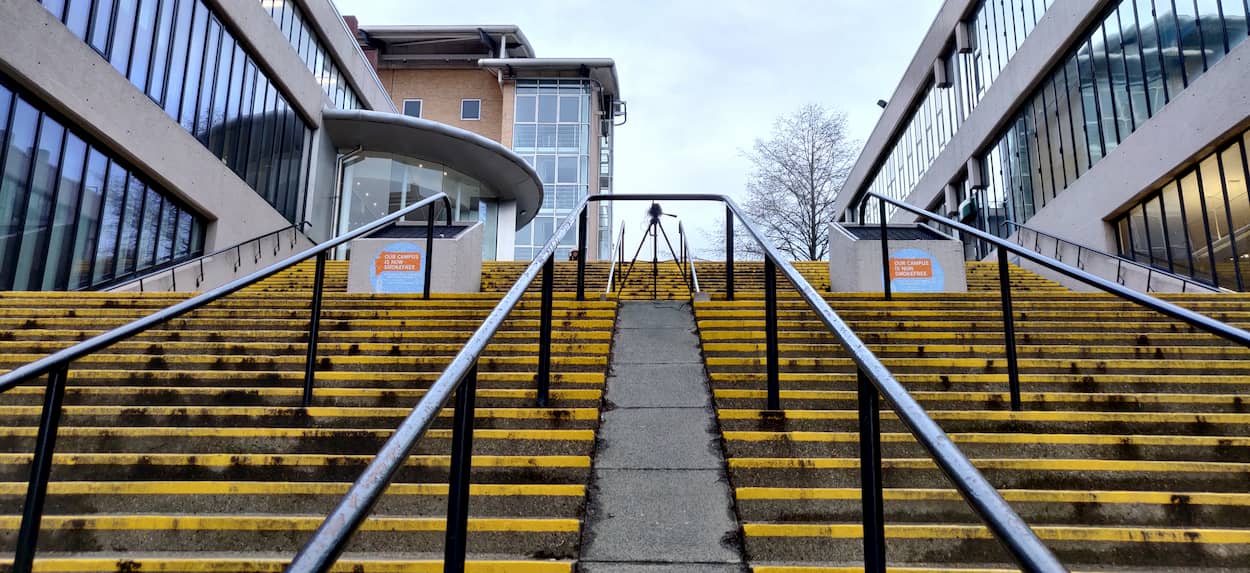Leeds Creative Labs: Bragg Edition Residency
I successfully applied to Leeds Creative Labs, which is a residency pairing creative practitioners with scientists for a period of risk taking, collaboration, and play. For the 2019 edition, artists were paired with researchers from the Bragg Centre for Materials Research which analyses, improves, and creates new materials across themes such as nanomaterials, ceramics, and cements.
My pairing was with Prof. Susan Bernal Lopez’s research team, primarily represented by Dr Alastair Marsh, who investigate cementitious materials dealing with contemporary environmental and infrastructural concerns.
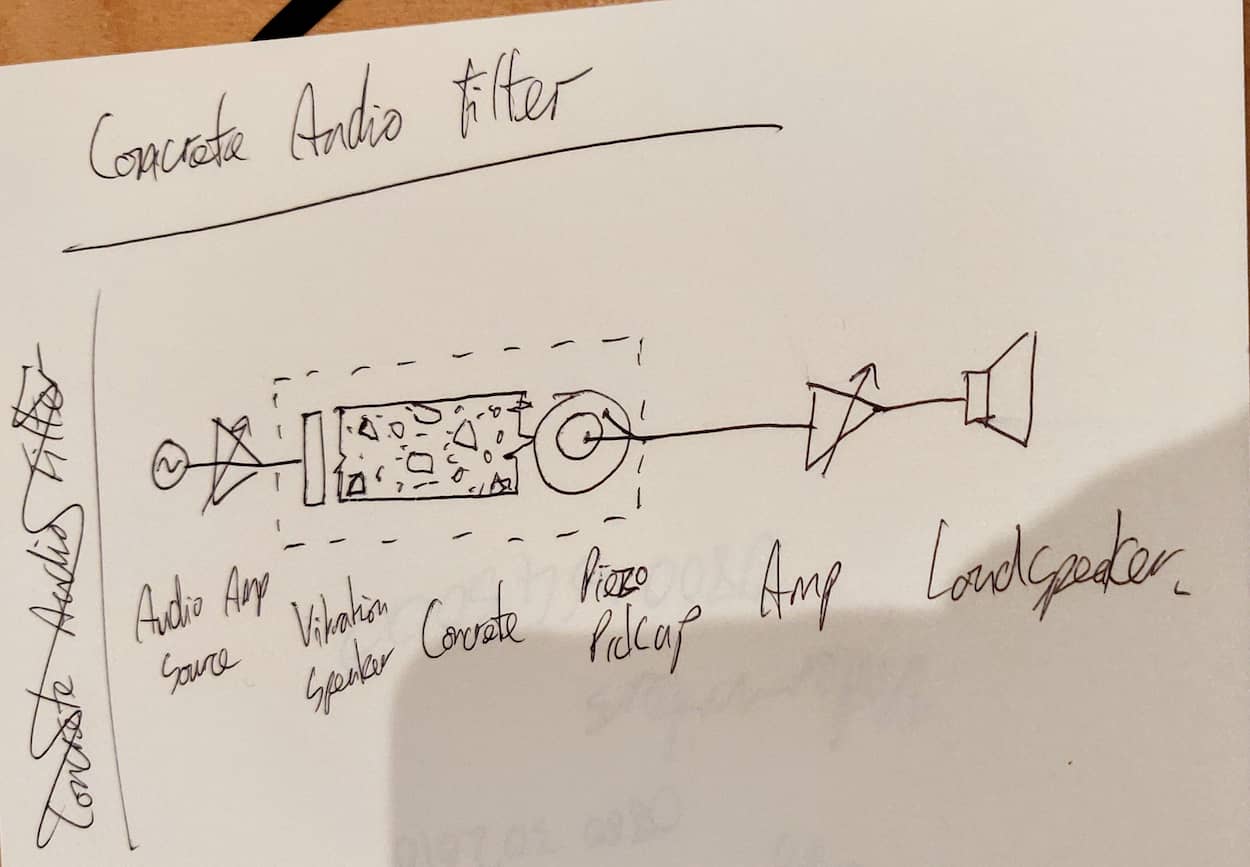
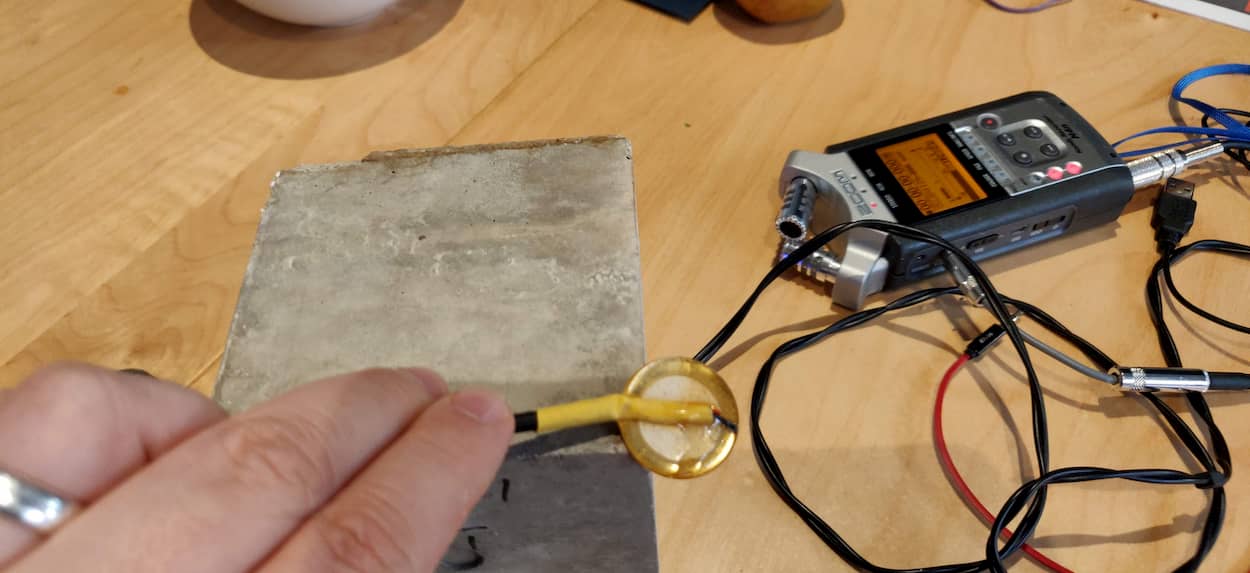
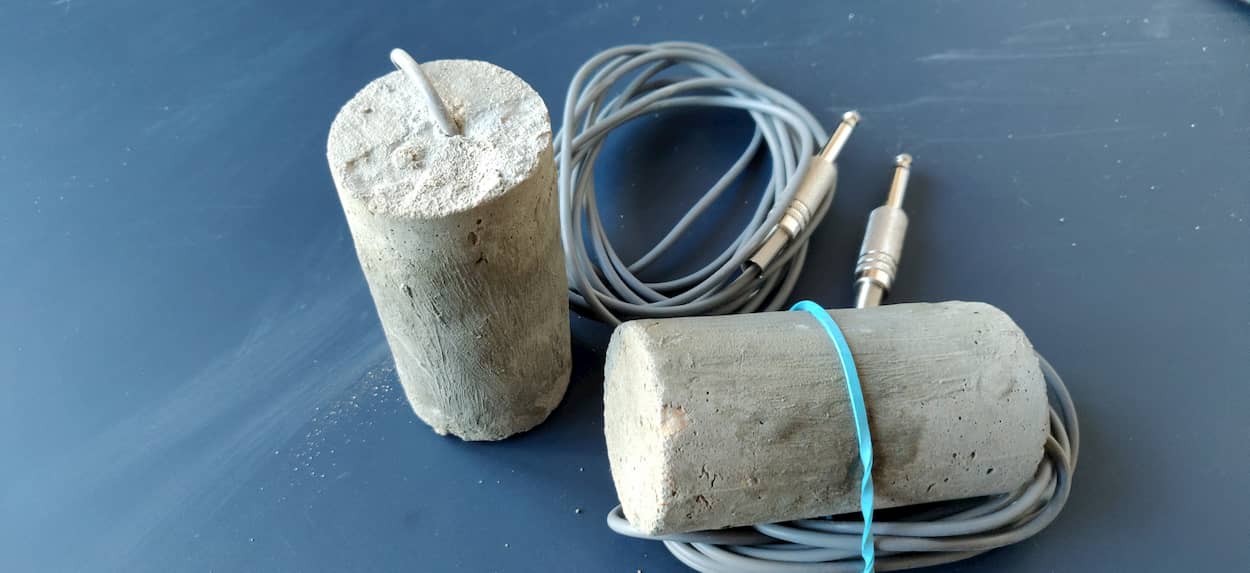
Initially I set about exploring feedback paths and the resonant filtering properties of concrete by using contact microphones and vibration speakers. This proved a useful staging ground for appreciating the sonic properties of this material, leading us towards further investigations.
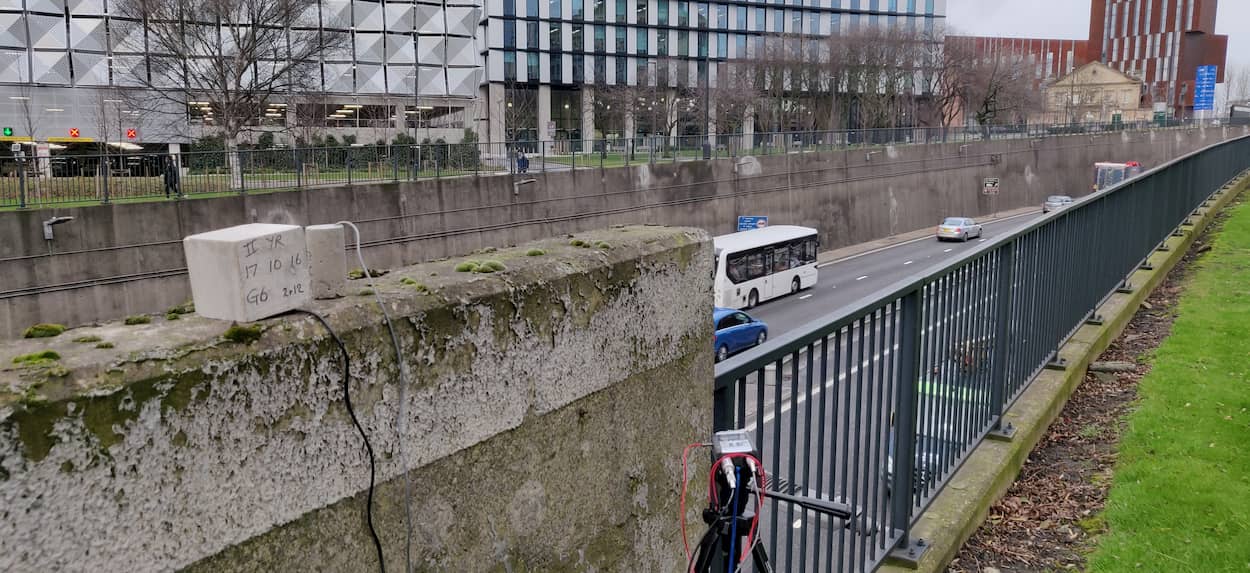
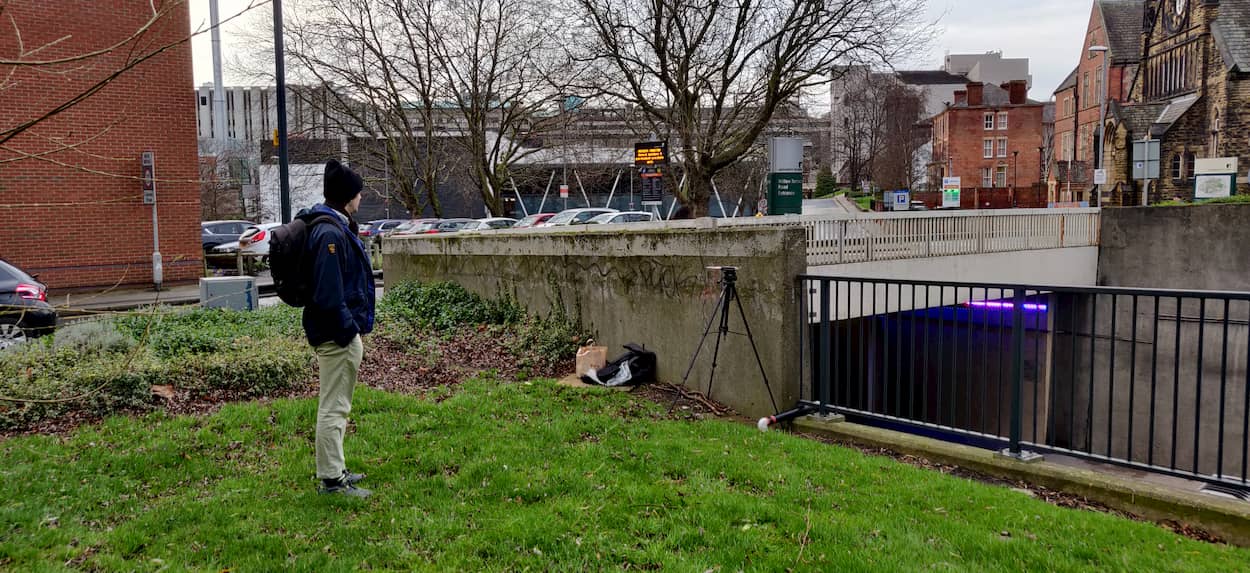
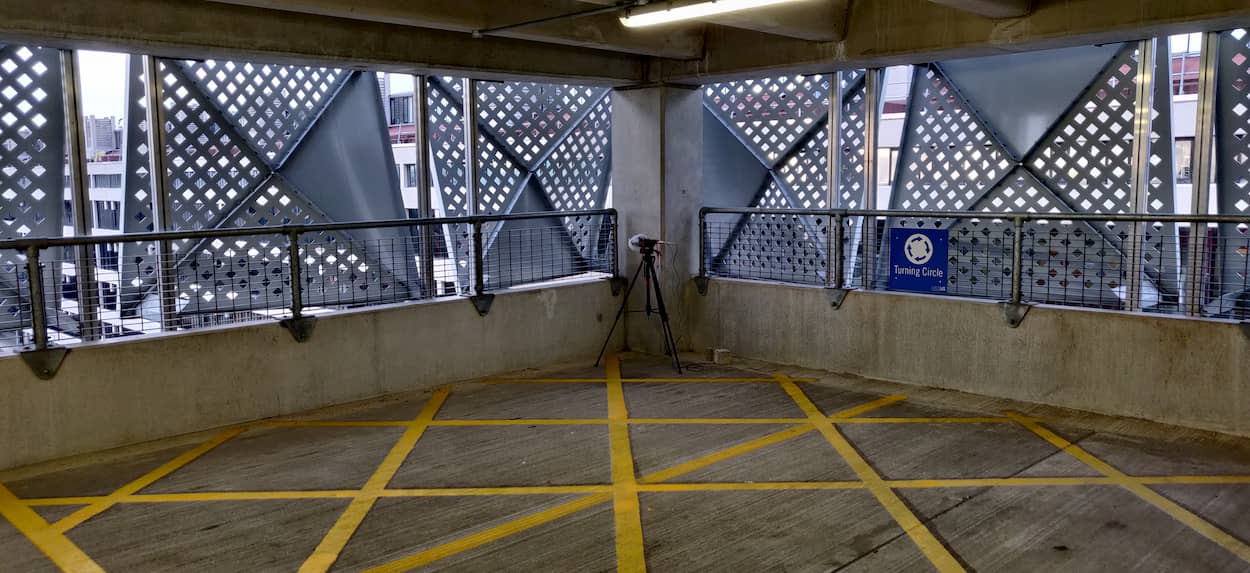
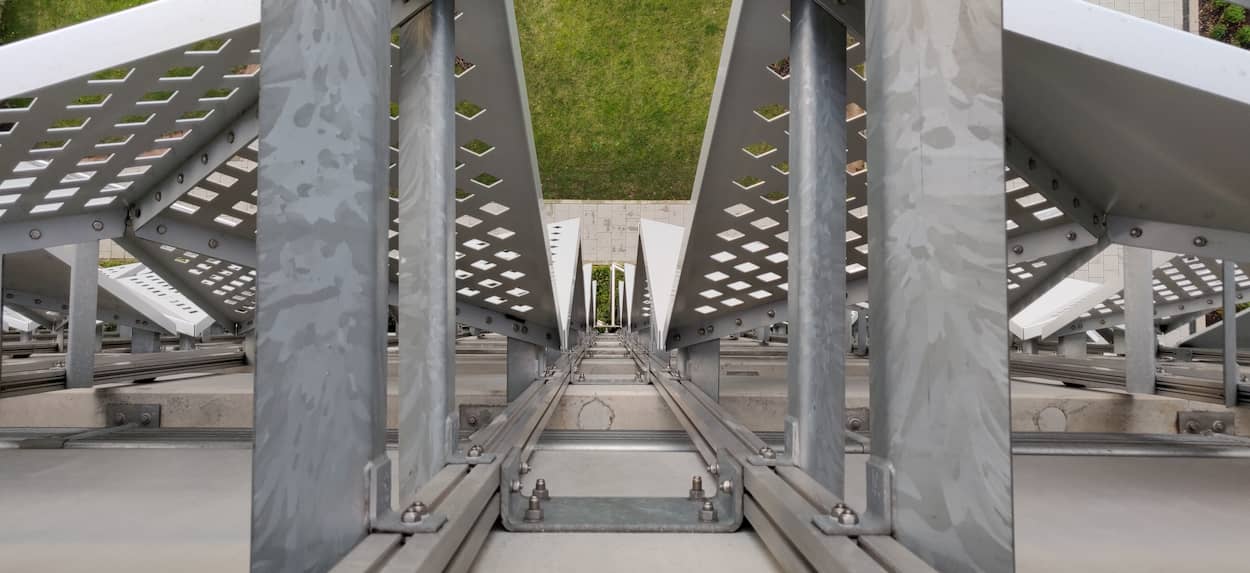
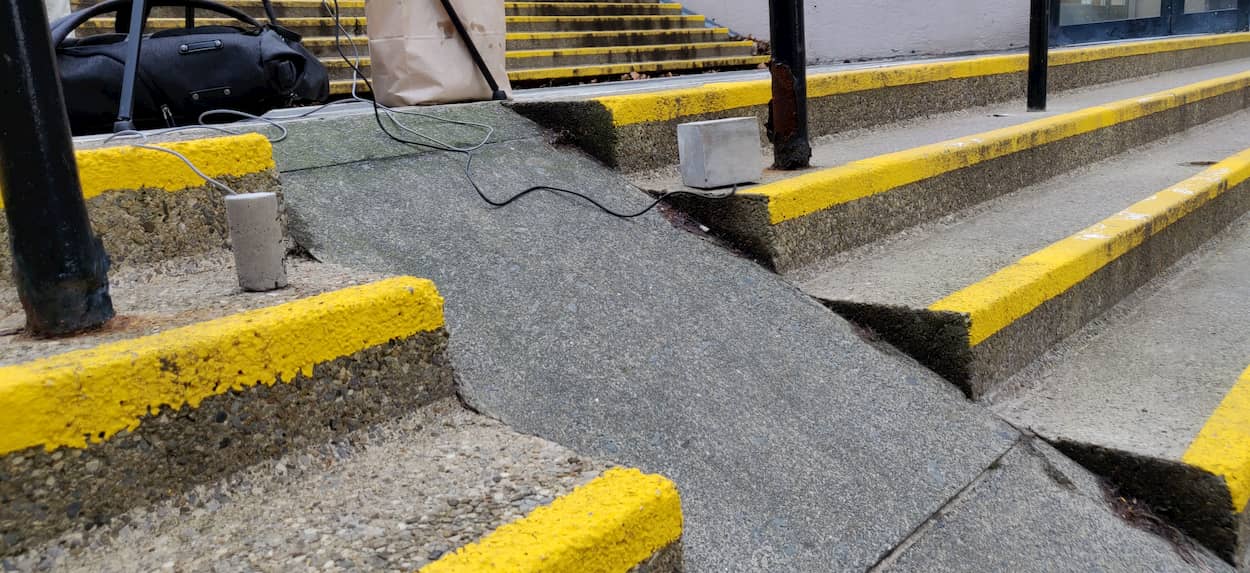
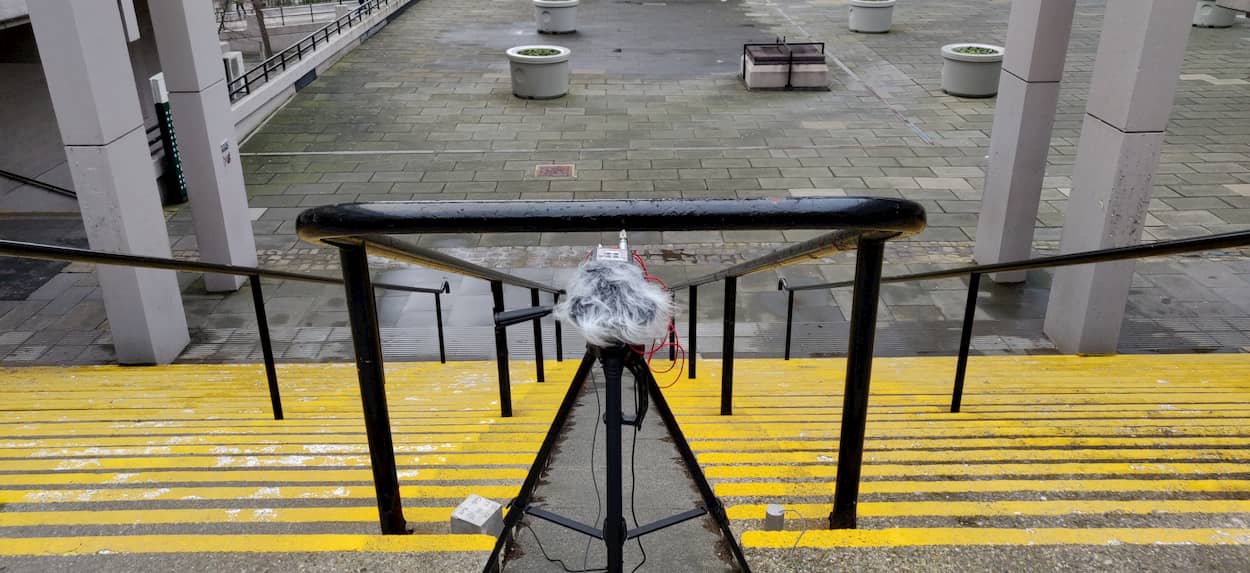
Thinking about Toshiya Tsunoda’s field recording process we considered how using concrete, to record concrete, might help create an observation point for vibrational phenomena. Be embedding contact microphones in concrete we set out to make ‘concrete microphones’ and used these in several field recording trials around University of Leeds campus. Whilst the mic’s initially performed poorly we still managed to record some interesting sounds. Of note was our experience of ‘playing’ the carpark’s external metal cladding, scraping our feet along the floor and jumping around to achieve a more performative relationship with the environment.

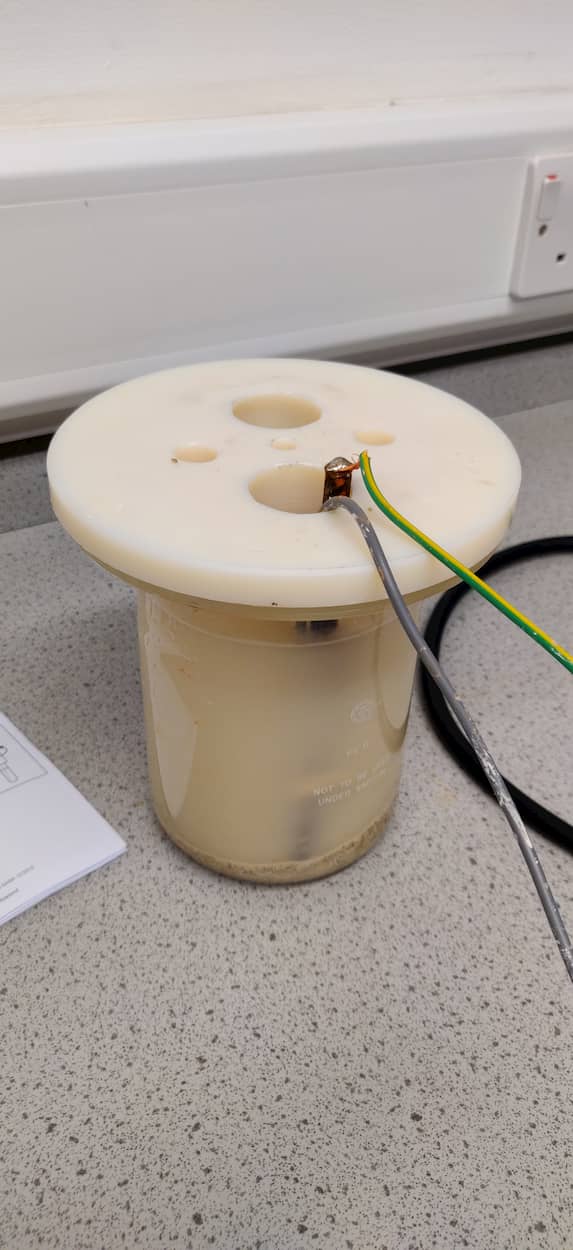
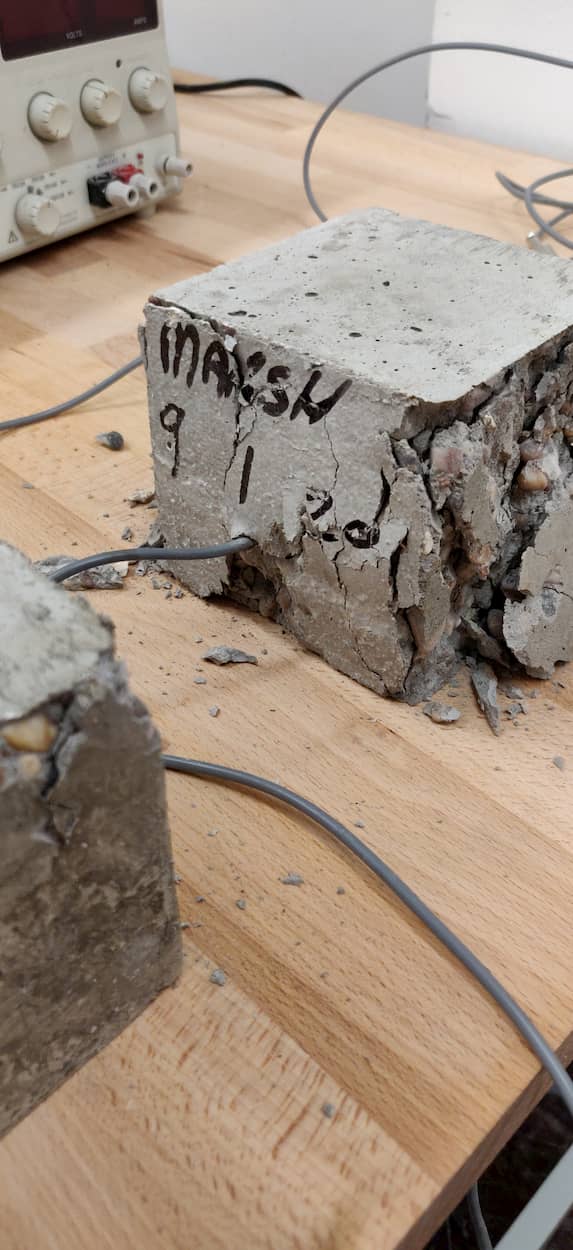
We conducted a range of other experiments, from telling the story of water in concrete production through a vibrating water bottle, creating patterns of cement powder upon a DIY chladni plate, attempting (unsuccessfully) to record the sound of steel rebar corrosion, and recording the sound of a concrete block’s compressive destruction from the inside.
I’m incredibly grateful for Alastair and his colleagues welcoming me into the department and Leeds Creative Labs for supporting our explorations.
